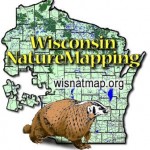
Deep in the heart of Wisconsin is a nature lover’s dream destination – the Beaver Creek Reserve. With a citizen science center, butterfly house, nature center, observatory, field research station, summer camp, and miles of trails to explore, there’s something for everyone to get excited about. We recently spoke with Sarah Braun, Citizen Science Director at the Reserve, about this amazing facility and its helpers.
Said Braun, “The most exciting part of working at Beaver Creek Reserve is meeting and working with our diverse cadre of volunteers. Many of our volunteers are retired and held previous careers in the Marine Corps, US Postal Service, environmental consulting agencies, insurance, banking, marketing, engineering, and teaching. The volunteers have a lot to offer and I learn from them every day.”
During a typical year, approximately 200 volunteers put in about 3,000 total hours at the Citizen Science Center (in addition to the approximately 1,000 volunteers that work at BCR as a whole). Staff at the Reserve also conduct outreach programs in nearby counties. As it turns out, Citizen Science Center volunteers even show up at unexpected times to help. Braun told us about a memorable day out on the lake sampling for aquatic invertebrates. After their small hand-held dredge and the backup dredge broke, the samplers motored over to a hardware store at a nearby boat landing. As it turned out one of the workers was a Beaver Creek volunteer who proceeded, with some creativity, to get both dredges working again. As Braun cheerfully recalled, “It was an unorthodox kind of day, but it worked out great!”
The Citizen Science Center is involved in running many research projects, including monitoring of Wisconsin’s streams, bats, birds (including kestrels), and worms, as well as a rapid-mapping of natural areas called “BioBlitzes.” One of Braun’s favorite projects, Wisconsin NatureMapping, is an online database system that lets citizens across Wisconsin record their wildlife observations. As Brain explains, “There are far more species of animals and more acres of land in Wisconsin than professional biologists can ever hope to keep track of on a regular basis, so the observations citizens make of squirrels or bluebirds or snakes in their own back yards help fill in the ‘knowledge gaps’ about these critters.” State biologists use observations from this project to inform the Wisconsin Wildlife Action Plan.
In addition, Braun is excited about an up-and-coming project, the “Native Bee Project,” that aims to map and identify populations of native bees in west-central Wisconsin. This project was inspired by two volunteers with an interest in bees and research. After collecting data on their own for a year, they teamed up with the Citizen Science center at BCR to obtain funding to hire a bee biologist who helped them develop a research protocol and begin bee-mapping. Said Braun, “Native bees are a challenge to identify and everyone is learning a lot through the project.”
Braun has enjoyed her time at BCR, but will soon be relocating to Colorado. To get in touch with citizen scientists at the reserve to see how you can be involved, send a note to the volunteer coordinator.

